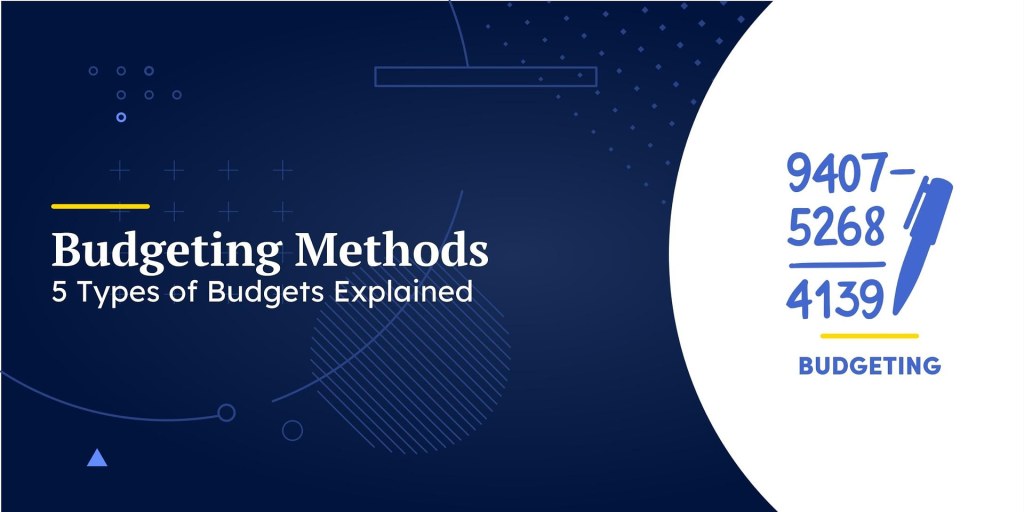5 Budgeting Methods
Introduction
Hello Readers,
Welcome to our article on 5 budgeting methods. In today’s fast-paced world, managing our finances effectively is crucial. Budgeting methods help us track our income and expenses, plan for the future, and achieve our financial goals. In this article, we will explore five popular budgeting methods and discuss their advantages and disadvantages. By the end, you will have a better understanding of which method suits your financial needs. Let’s dive in!
1. The Envelope System

Image Source: optimole.com
📁 The envelope system is a simple yet effective budgeting method that involves dividing your cash into different envelopes assigned for specific expenses. Each envelope represents a spending category, such as groceries, utilities, or entertainment. This method allows you to physically see how much money is allocated for each category and helps control overspending.
📅 When should you use the envelope system? This method works well for individuals or families who prefer using cash for their day-to-day expenses and want a visual representation of their budget. It promotes discipline and encourages mindful spending.
❓ What are the advantages and disadvantages of the envelope system? The main advantage is its simplicity and effectiveness in controlling spending. However, it may be inconvenient for online or card-based transactions, and it requires discipline to avoid mixing envelopes or overspending within a category.
2. The 50/30/20 Rule

Image Source: wordpress.com
📊 The 50/30/20 rule is a budgeting method that suggests allocating your after-tax income into three categories: 50% for needs, 30% for wants, and 20% for savings or debt repayment. This method provides a balanced approach to budgeting and ensures that you cover your essential expenses, enjoy discretionary spending, and save for the future.
🕰️ When is the 50/30/20 rule beneficial? This method is suitable for individuals who prefer a flexible budgeting approach and want to allocate their income proportionally. It allows for financial stability while still enjoying non-essential expenses.
❓ What are the advantages and disadvantages of the 50/30/20 rule? The main advantage is its simplicity and flexibility, making it easy to implement and adjust based on individual circumstances. However, it may not be suitable for individuals with high debt or those with irregular income.
3. Zero-Based Budgeting
📑 Zero-based budgeting is a method where you allocate every dollar of your income to a specific purpose, ensuring that your income minus expenses equals zero. In other words, you give every dollar a job, whether it’s for essential expenses, savings, or debt payments. This method helps prioritize spending and ensures that every dollar is accounted for.
🌍 When can you use zero-based budgeting? This method is great for individuals who want to have full control over their spending and make intentional financial decisions. It is particularly useful for those with irregular income or who want to eliminate debt.
❓ What are the advantages and disadvantages of zero-based budgeting? The main advantage is its focus on every dollar and the ability to allocate funds based on priorities. However, it requires meticulous tracking and planning, which may be time-consuming for some individuals.
4. The 60% Solution
💰 The 60% solution is a budgeting method that suggests allocating 60% of your after-tax income towards fixed expenses, such as rent, utilities, and debt payments. The remaining 40% is divided equally between long-term savings and discretionary spending. This method provides a clear framework for balancing your expenses and savings.
🌤️ When is the 60% solution applicable? This method is suitable for individuals who want to ensure a significant portion of their income goes towards savings or investments while still allowing room for discretionary spending. It promotes financial stability and responsible money management.
❓ What are the advantages and disadvantages of the 60% solution? The main advantage is its simplicity and focus on long-term savings. However, it may not provide enough flexibility for individuals with high living expenses or those with irregular income.
5. The Pay Yourself First Method
💵 The pay yourself first method involves prioritizing savings by setting aside a predetermined percentage of your income before allocating funds for other expenses. This method ensures that saving becomes a priority and encourages consistent and disciplined saving habits.
⏰ When should you use the pay yourself first method? This method is suitable for individuals who want to prioritize building their savings and investments. It helps you establish an emergency fund, save for retirement, or work towards other financial goals.
❓ What are the advantages and disadvantages of the pay yourself first method? The main advantage is its emphasis on savings, helping individuals build a strong financial foundation. However, it may require adjustments to accommodate other expenses and may not be suitable for individuals with limited income.
Advantages and Disadvantages
1. The envelope system: The advantages include better control over spending and visual representation of budget categories. The disadvantages include inconvenience for online transactions and the need for discipline.
2. The 50/30/20 rule: The advantages include a balanced approach to budgeting and flexibility. The disadvantages include potential challenges for individuals with high debt or irregular income.
3. Zero-based budgeting: The advantages include full control over spending and intentional financial decisions. The disadvantages include time-consuming tracking and planning.
4. The 60% solution: The advantages include a clear framework for balancing expenses and savings and a focus on long-term savings. The disadvantages include limited flexibility for high living expenses or irregular income.
5. The pay yourself first method: The advantages include prioritizing savings and establishing strong financial habits. The disadvantages include the need for adjustments to accommodate other expenses and limited suitability for individuals with limited income.
FAQ (Frequently Asked Questions)
Q1: Is there a budgeting method suitable for freelancers with irregular income?
A1: Yes, zero-based budgeting is a great method for freelancers. It allows you to allocate funds based on your priorities, accommodate irregular income, and eliminate debt.
Q2: Which budgeting method is best for individuals with high debt?
A2: The envelope system and the pay yourself first method can be beneficial for individuals with high debt. The envelope system promotes better control over spending, while the pay yourself first method prioritizes savings, which can be used towards debt repayment.
Q3: Can I combine budgeting methods?
A3: Yes, you can combine budgeting methods based on your financial goals and circumstances. For example, you can use the 50/30/20 rule as a baseline and incorporate the envelope system for better control over specific categories.
Q4: Are there budgeting apps available for these methods?
A4: Yes, there are numerous budgeting apps available that cater to different budgeting methods. These apps can help track expenses, set goals, and provide insights into your financial habits.
Q5: How long should I follow a budgeting method before evaluating its effectiveness?
A5: It is recommended to follow a budgeting method for at least three months before evaluating its effectiveness. This allows you to adjust and fine-tune the method according to your needs.
Conclusion
In conclusion, budgeting methods are essential tools for effective financial management. Whether you prefer the simplicity of the envelope system, the flexibility of the 50/30/20 rule, the control of zero-based budgeting, the balance of the 60% solution, or the emphasis on savings with the pay yourself first method, there is a method that suits your financial goals and lifestyle. Experiment with different methods, adjust as needed, and find the approach that helps you achieve financial success. Start budgeting today and take control of your financial future!
Final Remarks
Friends, budgeting is a personal journey, and it may take time to find the method that works best for you. Remember that consistency and discipline play key roles in successful budgeting. It’s important to regularly review your budget, track your expenses, and make adjustments as necessary. While budgeting can be challenging at times, the rewards of financial stability and achieving your goals are worth the effort. As always, consult with a financial advisor for personalized guidance and make informed decisions based on your unique circumstances.